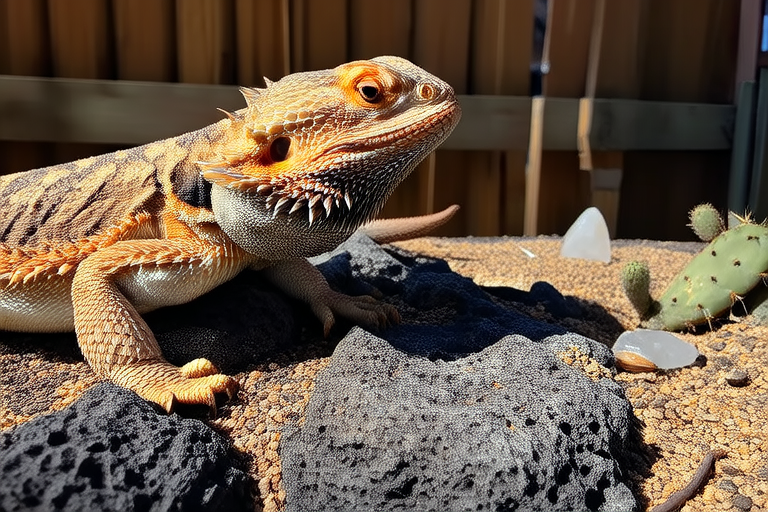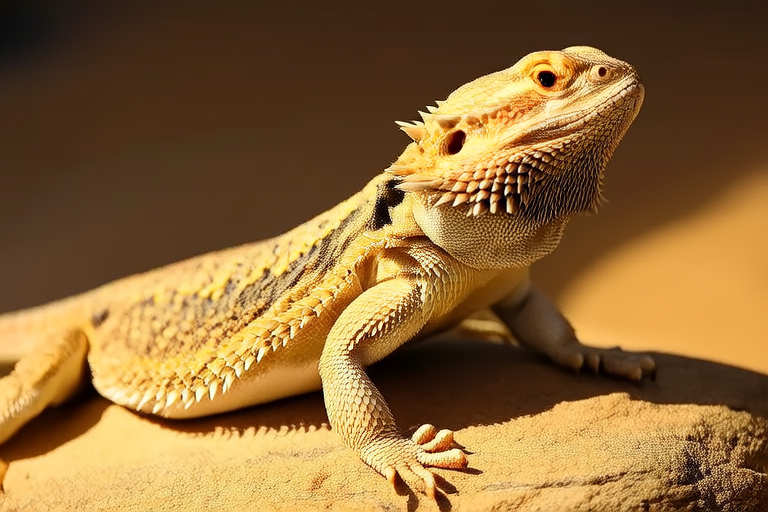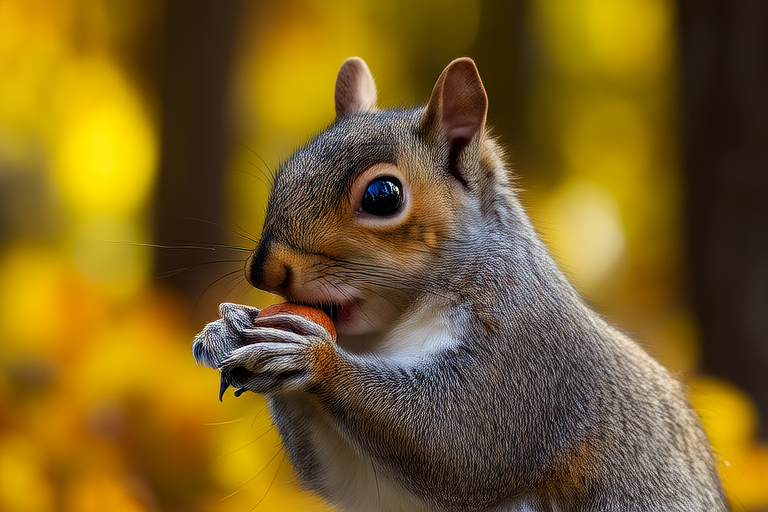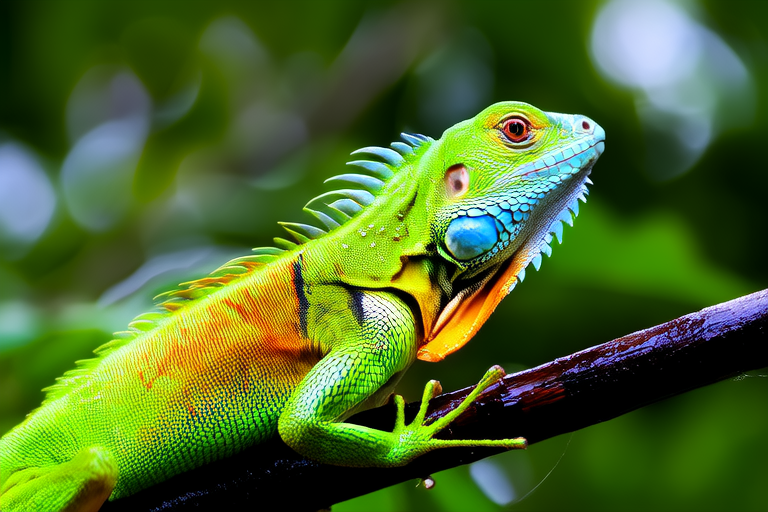
The Ultimate Guide: How to Decorate a Perfect Habitat for Your Bearded Dragon
Welcome to the ultimate guide on creating the perfect habitat for your bearded dragon. This comprehensive step-by-step guide will help you understand everything from selecting the appropriate tank size to providing the necessary lighting, temperature gradients, substrate options, hiding spots, climbing structures, and plants. Additionally, we’ll cover tips for maintaining hygiene and ensuring safety within the habitat, as well as advice on mimicking natural environments to promote the health and well-being of your pet.
Step 1: Selecting the Appropriate Tank Size
The first step in creating a suitable habitat for your bearded dragon is choosing an appropriately sized tank. A baby or juvenile bearded dragon can thrive in a 20-gallon tank, but as they grow, they will need more space. Adult bearded dragons require a minimum of a 40-gallon tank. It’s important to remember that larger tanks provide more room for your bearded dragon to explore and exercise, which contributes to their overall health and happiness.
Step 2: Lighting Requirements
Proper lighting is crucial for your bearded dragon’s health. They need two types of UVB light: UVB 2.0 for 8-12 hours a day and UVB 5.0 for 12-14 hours a day. These lights help your bearded dragon synthesize vitamin D3, which is essential for calcium absorption. Make sure to place the UVB light at the top of the tank and replace it every six months, as the UVB output diminishes over time. Additionally, a basking bulb should be placed on one side of the tank to create a warm spot for your bearded dragon to bask under. The basking spot should reach around 95-105°F (35-40°C).
Step 3: Temperature Gradients
Maintaining a proper temperature gradient within the tank is vital for your bearded dragon’s health. The cool end of the tank should be between 75-80°F (24-27°C), while the hot end should be around 95-105°F (35-40°C). You can achieve this by placing the basking bulb on one side of the tank and using a thermostat or rheostat to control the heat output. Monitoring the temperatures with a digital thermometer is recommended to ensure accuracy.
Step 4: Substrate Options
Selecting the right substrate for your bearded dragon’s tank is important for their health and comfort. Avoid substrates like sand, gravel, or wood shavings, as these can lead to impaction if ingested. Instead, opt for safer alternatives such as paper towels, reptile carpet, or tile. These substrates are easy to clean and pose no risk of ingestion. If you prefer a more natural look, consider using eco-friendly paper bedding or indoor-outdoor carpet. Ensure that the substrate is deep enough to allow for burrowing and that it remains dry to prevent bacterial growth.
Step 5: Hiding Spots
Providing hiding spots for your bearded dragon is essential for their mental and emotional well-being. These spots offer a sense of security and privacy, helping to reduce stress. You can create hiding spots using various materials such as cork bark, half logs, or plastic caves. Place these items in different areas of the tank to encourage exploration and provide multiple options for your bearded dragon to choose from. Ensure that the hiding spots are large enough for your bearded dragon to fit comfortably inside.
Step 6: Climbing Structures
Bearded dragons are naturally curious and enjoy climbing. Providing climbing structures within the tank allows them to exercise and explore. You can use branches, rocks, or commercially available reptile perches to create climbing opportunities. When selecting branches, choose those with smooth bark and avoid any that may have sharp edges or splinters. Arrange the climbing structures at varying heights to encourage movement throughout the tank. Ensure that all structures are securely placed to prevent tipping or collapsing.
Step 7: Plants
Incorporating live or artificial plants into your bearded dragon’s habitat can enhance its aesthetics and provide additional enrichment. Live plants offer the added benefit of improving air quality and humidity levels. However, not all plants are safe for bearded dragons. Research thoroughly before introducing any plant species to ensure they are non-toxic and safe for consumption. Some popular choices include pothos, spider plants, and peace lilies. Artificial plants are another option, offering a similar aesthetic without the risk of toxicity. Ensure that all plants are securely anchored to prevent them from falling and injuring your bearded dragon.
Step 8: Maintaining Hygiene and Ensuring Safety
Regular cleaning and maintenance are essential for keeping your bearded dragon’s habitat hygienic and safe. Clean the tank weekly, removing waste and soiled substrate. Spot clean daily to maintain cleanliness and prevent odor buildup. Disinfect the tank and accessories monthly using a reptile-safe cleaner. Allow everything to air dry completely before returning it to the tank. Always supervise your bearded dragon when handling or cleaning the tank to ensure their safety.
Step 9: Mimicking Natural Environments
Mimicking natural environments within the tank can greatly contribute to your bearded dragon’s health and well-being. This includes replicating the temperature, lighting, and landscape found in their native habitats. Use a combination of heating elements, UVB lights, and substrate to create a realistic environment. Incorporate rocks, branches, and plants to provide climbing and hiding opportunities. Regularly check and adjust the temperature and lighting to ensure optimal conditions for your bearded dragon. By creating a naturalistic environment, you can promote healthy behaviors and reduce stress.
Conclusion
Creating the perfect habitat for your bearded dragon requires careful consideration and attention to detail. By following the steps outlined in this guide, you can provide a safe, comfortable, and stimulating environment that promotes your bearded dragon’s health and happiness. Remember to regularly monitor and adjust the tank’s conditions to ensure they remain optimal. With the right setup, your bearded dragon will thrive and bring joy to your home for years to come.





